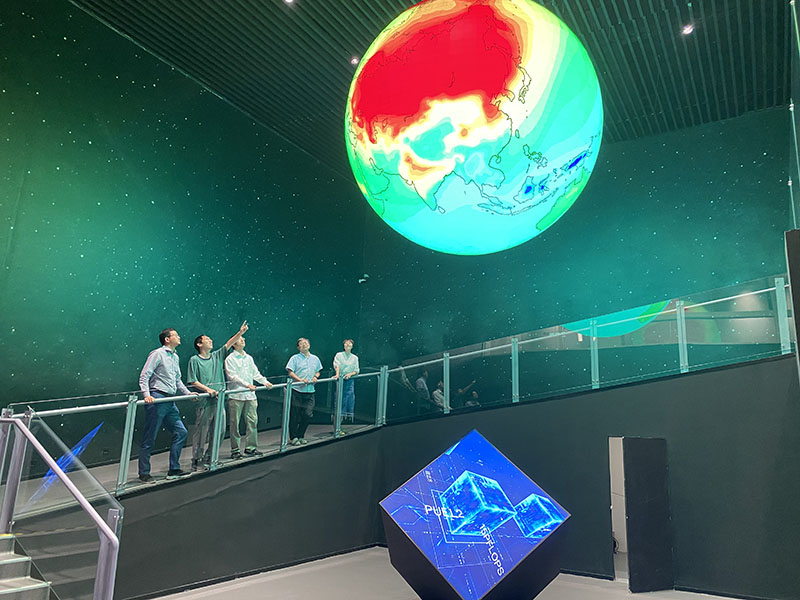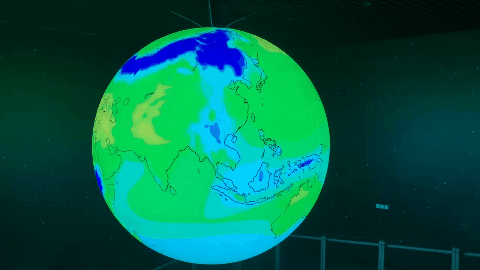The Chinese Academy of Sciences Earth System Model (CAS-ESM2.0), a sophisticated Earth modeling tool, has achieved a major breakthrough in fully coupled atmospheric CO2 simulation, as revealed in the latest report published in Advances in Atmospheric Sciences. Their findings highlight CAS-ESM2.0's exceptional capability in bi-directional coupling of terrestrial and marine carbon cycles, along with atmospheric CO2, enabling accurate spatiotemporal assessments of atmospheric CO2 changes.
Atmospheric CO2, a pivotal greenhouse gas, has surged since the Industrial Revolution, significantly affecting both the global climate, leading to warming through the greenhouse effect, and ecosystems by enhancing plant photosynthesis. It remains central to worldwide climate and environmental research.
Earth system models play a vital role in studying atmospheric CO2 concentration changes and their complex interactions with climate across different spatiotemporal scales. Achieving full coupling of atmospheric CO2 in these models has long been a formidable challenge, particularly in emissions-driven simulations, where CO2 interacts with land and ocean carbon cycles. This complexity presents numerous challenges and uncertainties, making it a significant and meaningful endeavor.

CAS-ESM2 can accurately simulate the seasonal variations in atmospheric CO2, primarily attributed to the seasonal growth of terrestrial ecosystems. (Image by ZHU Jiawen)
Over several decades, CAS-ESM has undergone continuous development, culminating in the release of CAS-ESM2.0. This latest version has successfully completed CMIP6 DECK (Diagnosis, Evaluation, and Characterization of Klima) simulations (concentration-driven runs) and submitted the results to CMIP6. The team's subsequent efforts focused on enhancing CAS-ESM2.0 to achieve two-way coupling among atmospheric CO2, the physical climate system, and the carbon cycle in land and ocean. This breakthrough empowers CAS-ESM2.0 to simulate CO2-carbon-climate interactions and autonomously calculate atmospheric CO2 concentrations.

The CAS-ESM team discussed the simulation results of fully coupled atmospheric CO2 seasonal variations while examining visualizations on the suspended dome screen at the Earth System Numerical Simulation Facility (EarthLab). (Image by LI Guoqiang)
Leveraging CAS-ESM2's capabilities, the researchers conducted a coupled carbon-climate simulation in alignment with CMIP6's historical emissions-driven experiment proposal. The results are remarkable, with CAS-ESM2 demonstrating excellent agreement with observations, accurately reproducing the rising trend of annual CO2 levels from 1850 to 2014 and capturing the seasonal CO2 cycle.

CAS-ESM2 is capable of reasonably simulating the increasing trend of atmospheric CO2 from 1850 to 2014, as well as the response of land and ocean net carbon fluxes.(Animation by ZHU Jiawen and GPVis Visualization Team)
CAS-ESM's potential applications, given its ability to simulate CO2-carbon-climate interactions, are manifold. It offers a valuable tool for investigating scientific issues related to carbon-climate interactions, enabling quantification of model biases associated with specific processes, such as fire and vegetation dynamics, and revealing the underlying mechanisms.
Furthermore, CAS-ESM holds promise in supporting China's ambitious goal of carbon neutrality. By employing CAS-ESM to assess net carbon fluxes at each stage of the carbon-neutral journey, policymakers can receive invaluable insights to refine carbon-neutral strategies.
The research paper's authors include Jiawen Zhu (the first author), Juanxiong He (the corresponding author), Yangchun Li, He Zhang, Xiaodong Zeng, Kece Fei, and Jiangbo Jin from the Institute of Atmospheric Physics Chinese Academy of Sciences, along with Duoying Ji from Beijing Normal University and Minghua Zhang from Stony Brook University.
This breakthrough was made possible via support from the National Key Research and Development Program of China (2022YFE0106500), the Youth Innovation Promotion Association of the Chinese Academy of Sciences (2022076), and the National Key Scientific and Technological Infrastructure project "Earth System Numerical Simulation Facility" (EarthLab; 2023-EL-ZD-00012).
Citation: Zhu, J. W., and Coauthors, 2023: CAS-ESM2 successfully reproduces historical atmospheric CO2 in a coupled carbon–-climate simulation. Adv. Atmo. Sci., https://doi.org/10.1007/s00376-023-3172-9.

